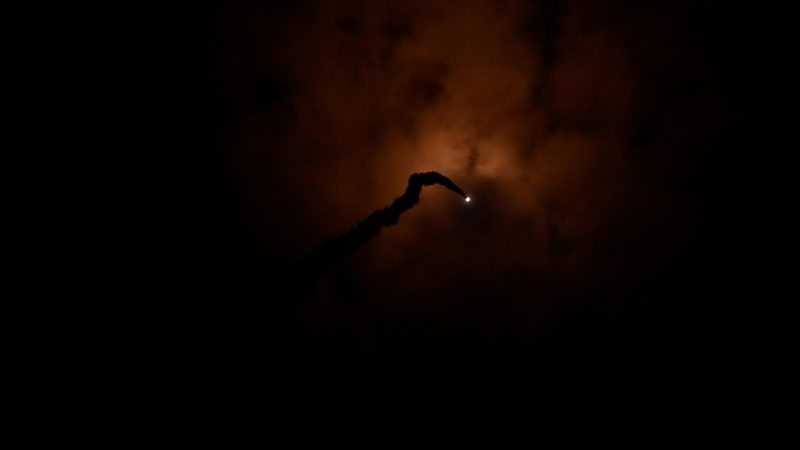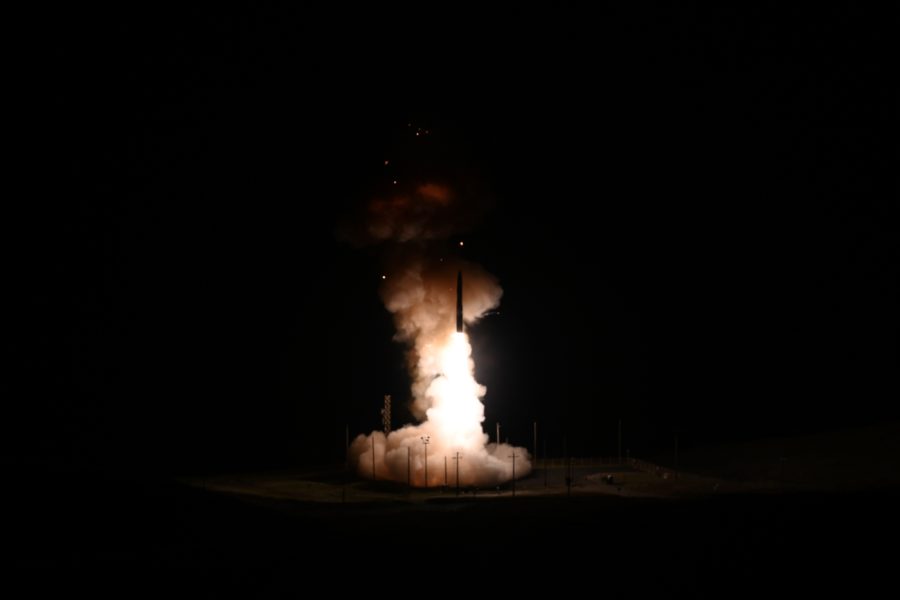The Air Force launched an unarmed Minuteman III intercontinental ballistic missile from Vandenberg Space Force Base, Calif., early Feb. 19, marking its first test of the year.
Launched at around 1 a.m. Pacific Time, the missile traveled roughly 4,200 miles at speeds exceeding 15,000 miles per hour, eventually reaching a test range near the Kwajalein Atoll in the central Pacific Ocean. The missile carried a single re-entry vehicle—a telemetered joint test assembly that was designed to collect data.
“During this test, we collected and analyzed performance and other key data points to evaluate current missile system competencies,” Col. Dustin Harmon, 377th Test and Evaluation Group commander said in a release. The group, based at Vandenberg, oversees periodic test launches as the sole organization focused on testing and analyzing the U.S.’s current ICBM fleet.
Air Force Global Strike Command said the test launch aims to “demonstrate the readiness of U.S. nuclear forces.” The service routinely conducts these ICBM tests, scheduling them months ahead and stressing that they are not tied to current world events.
The Reagan Test Site, located at the Kwajalein Atoll in the Marshall Islands, gathers information about the missile’s performance to evaluate its capabilities as it nears its target. U.S. Army Lt. Col. Casey Rumfelt, Reagan Test Site range director, said the site offers “a unique suite of instrumentation and an ideal geographic location to meet many of the U.S. testing needs that cannot be accomplished anywhere else in the world.”
Over the past few decades, the service has launched more than 300 missiles, with the latest test happening in November. Air & Space Forces Magazine was granted exclusive access to observe that test, which involved the Air Force launching an unarmed ICBM with three test reentry vehicles—one high-fidelity Joint Test Assembly, which carries non-nuclear explosives, and two telemetry Joint Test Assembly objects—which reached the Reagan Test Site roughly 30 minutes after the launch.
Airmen from all three missile wings under Air Force Global Strike Command helped support this latest test launch, as did Space Force Guardians. The missile used in the launch was randomly selected from F.E. Warren, then transported and reassembled at Vandenberg. Currently, the Air Force has about 400 Minuteman III missiles stationed across fields in Colorado, Montana, Nebraska, North Dakota, and Wyoming.
“Today’s Minuteman III test launch is just one of the ways the Department of the Air Force demonstrates the readiness, precision, and professionalism of U.S. nuclear forces,” acting Air Force Secretary Gary A, Ashworth said in a statement. “It also provides confidence in the lethality and effectiveness of the nation’s nuclear deterrence mission.”

The aging Minuteman III has been in service since 1970 and is well past its expected service life. The Air Force plans to replace it with the new Sentinel ICBM, but that program has faced major delays and cost overruns. Most recently, officials last month ordered contractor Northrop Grumman to halt work on designing and building Sentinel launch facilities at Vandenberg and Hill Air Force Base and Dugway, Utah.
The halt comes as the service reworks its strategy to get the program back on track. At the same time, Minuteman III is expected to serve for years to come.
